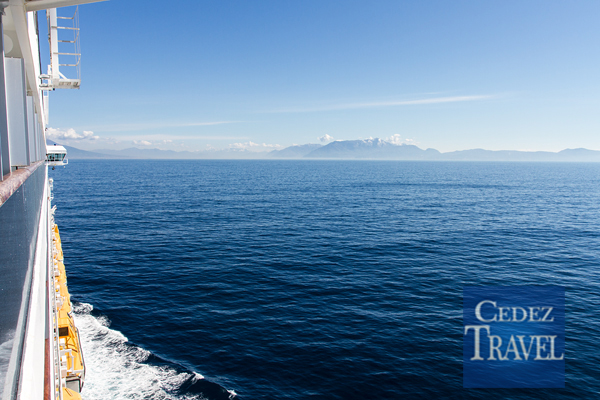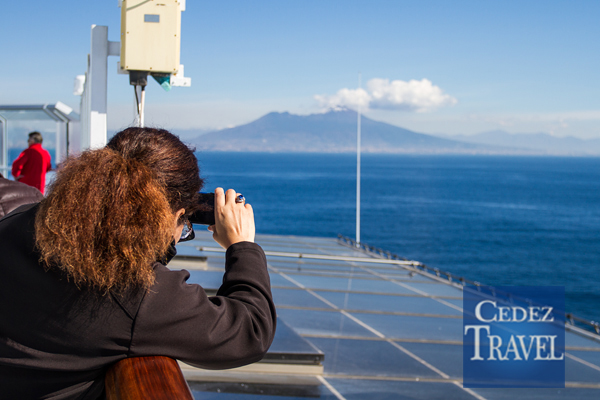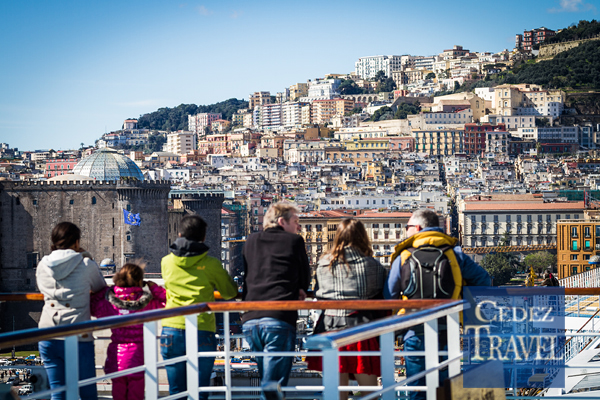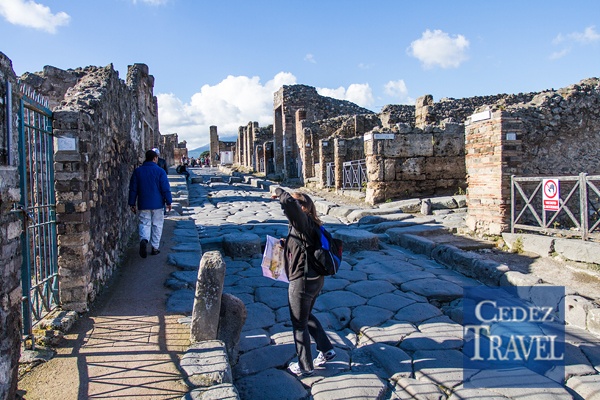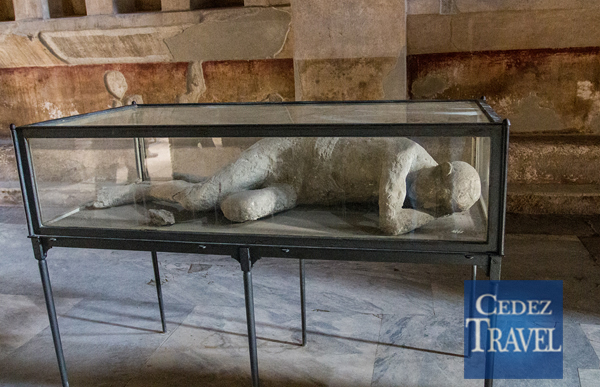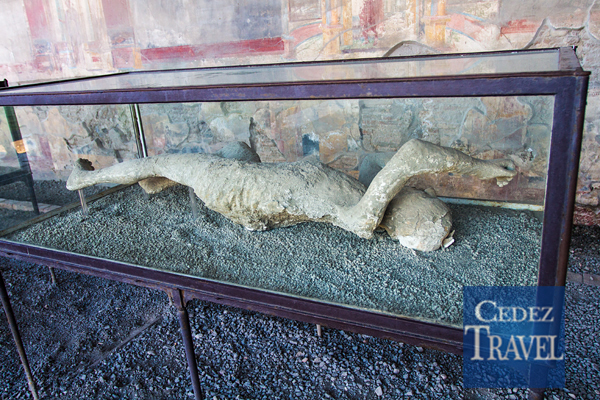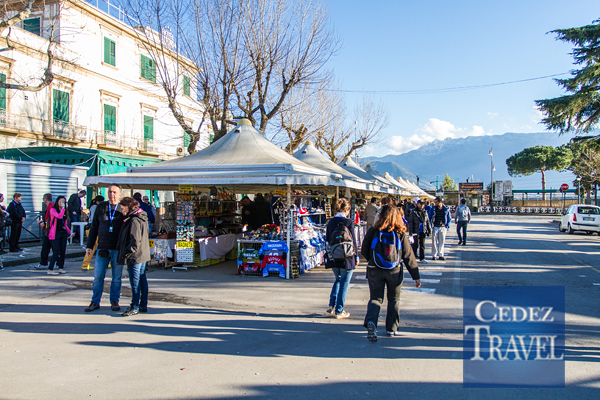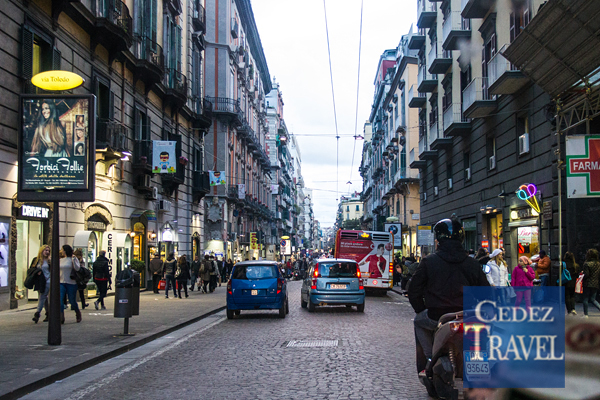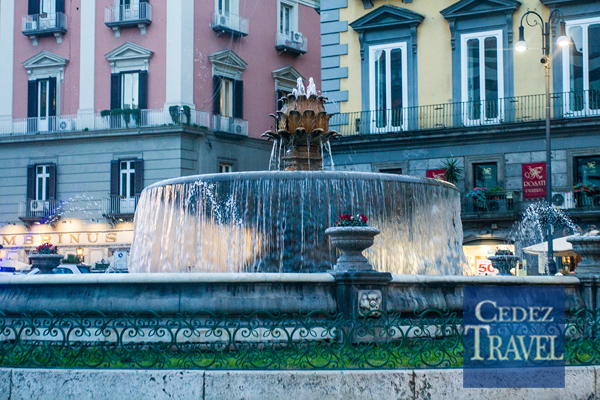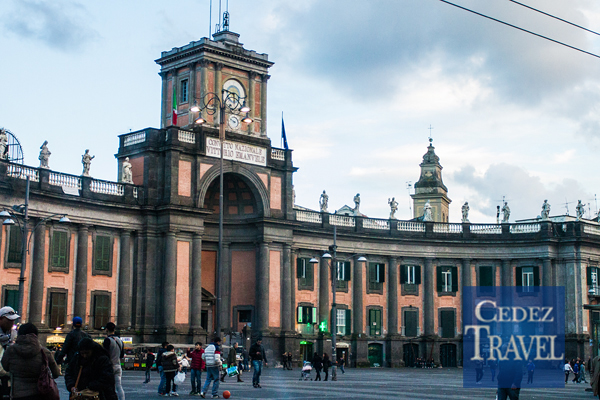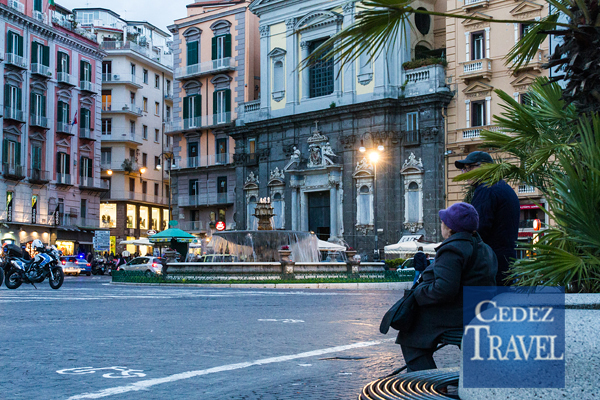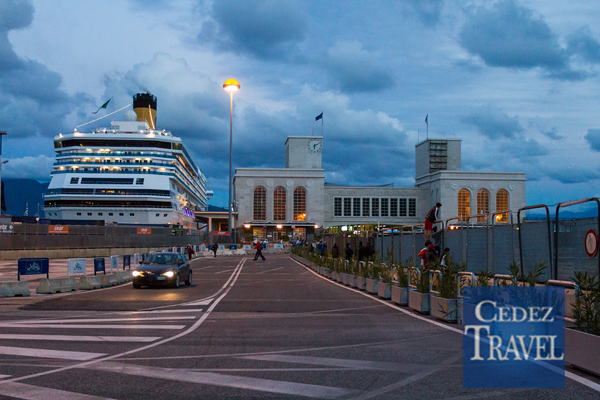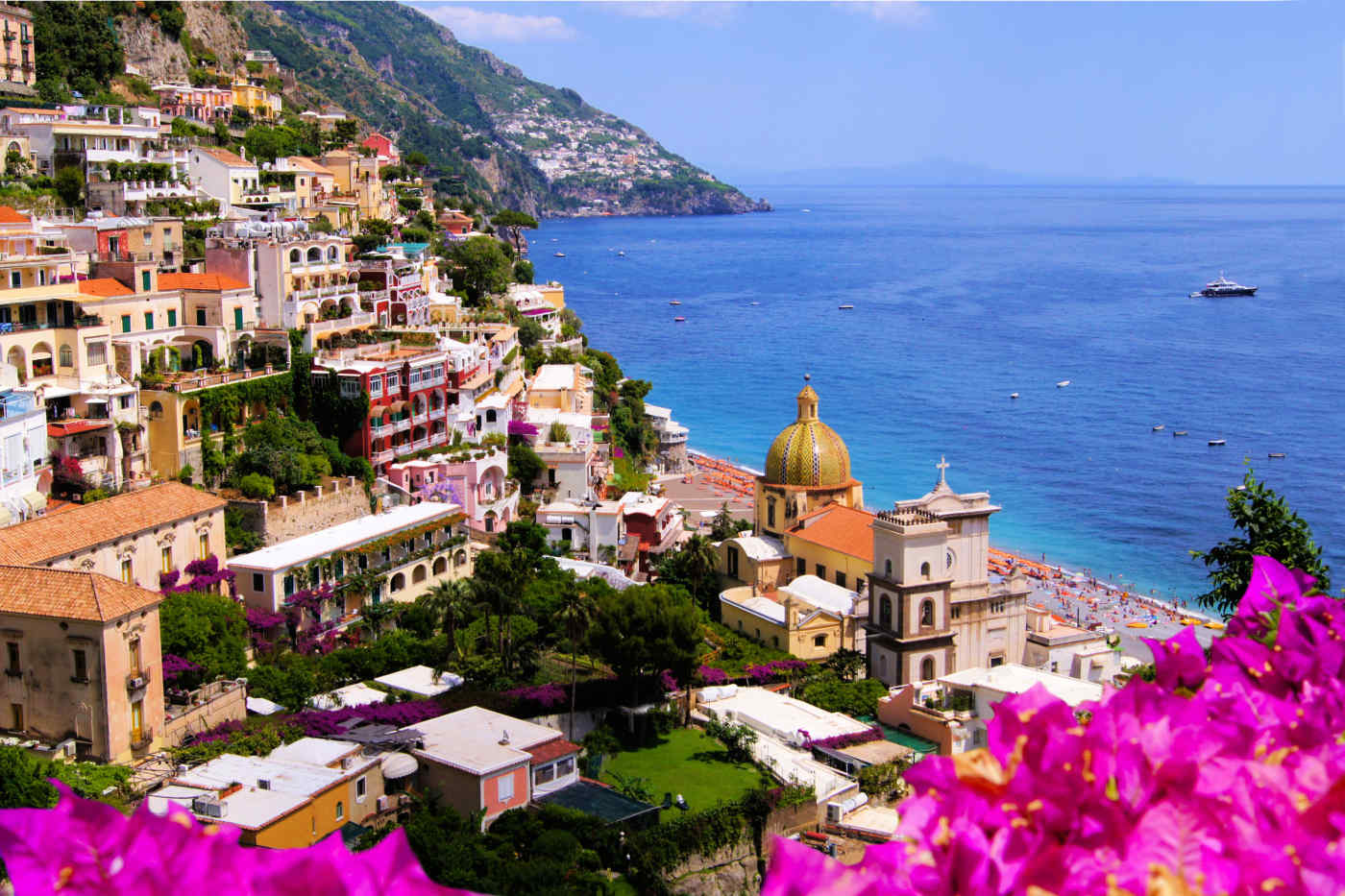Our Travels • Naples, Italy
Day three of our Mediterranean journey dawned beautiful and bright. It was still chilly, somewhat to my disappointment, but the excitement of our next destination overrode any minor issues like a chill in the air. Naples, Italy! The originator of pizza, next door neighbor to Pompeii, home of limoncello and SO much more.
Sailing into the Port of Naples was like a living postcard. Ancient castles and modern buildings standing shoulder to shoulder up the slopes, and in the distance, Mount Vesuvius-snow capped and quiet for our visit, but still an active member of this community of over 3 million people.
Naples, or Napoli in Italian, was founded in 8th century BC (over 2800 years ago) by the Greeks. The Greeks named it Neapolis, or New City and it is one of the oldest continuously-inhabited cities in the world and a UNESCO World Heritage site. The UNESCO evaluation committee described Naples’ centre as being “of exceptional value”, and went on to say that Naples’ setting on the Bay of Naples “gives it an outstanding universal value which has had a profound influence”. But Italians have known these things for centuries: The view of Naples from the sea is so beautiful that a traditional Italian saying states that once you’ve seen it, you can die.
Born as a Greek colony of Cuma and virtually positioned in the geographical center of the Mediterranean basin, it has an unmatched heritage as a place of exchange between cultures. This is reflected in the city’s structure and monuments, a mixture of Greek, Roman, Norman, Angevin, Swedish, Spanish and French architecture. The Neapolitan language – notoriously unintelligible to many speakers of standard Tuscan Italian – also bears witness to the town’s diverse cultural origins, being composed of French, Spanish and Arab words, inserted into a Greek, Oscan and Latin structure. Courtesy of Wikipedia
As a child, I was fascinated by all things Greek and Roman -mythology, the geography, I even tried to teach myself the Greek alphabet. One of the many stories that intrigued me was the story of Pompeii. The idea that an entire town could get up and go about their daily routine, and at the end of that day almost everyone had perished, was fascinating to me. It also served as an inspiration to “Seize the Day”, or Carpe Diem, for tomorrow is not promised. Naturally, when we selected this sailing on the Costa Serena, I was determined to see the excavation of Pompeii when we stopped in Naples, Italy.
Mount Vesuvius is best known for its eruption in AD 79 that led to the burying and destruction of the Roman cities of Pompeii and Herculaneum. That eruption ejected a cloud of stones, ash and fumes to a height of 33 km (20.5 mi), spewing molten rock and pulverized pumice at the rate of 1.5 million tons per second, ultimately releasing a hundred thousand times the thermal energy released by theHiroshima bombing.[1] An estimated 16,000 people died due to hydrothermal pyroclastic flows.[2] The only surviving eyewitness account of the event consists of two letters by Pliny the Younger to the historian Tacitus.[3]
Vesuvius has erupted many times since and is the only volcano on the European mainland to have erupted within the last hundred years. Today, it is regarded as one of the most dangerous volcanoes in the world because of the population of 3,000,000 people living nearby and its tendency towards explosive (Plinian) eruptions. It is the most densely populated volcanic region in the world.[4] Courtesy of Wikipedia
Our approach into the Porto di Napoli (Port of Naples) provided fabulous views on both sides of the ship.
The Castel dell’Ovo is the oldest standing fortification in Naples founded in 6th century BC. Castel dell’Ovo, or in English, Egg Castle, is located on the former island of Megaride, which is now a peninsula, on the gulf of Naples in Italy. The castle’s name comes from a legend about the Roman poet Virgil, who had a reputation in medieval times as a great sorcerer. In the legend, Virgil put a magical egg into the foundations to support the fortifications. If something had broken the egg, the castle would be destroyed and a series of disastrous events would have involved the city of Naples. Courtesy of Wikipedia
Below are views of the large dome of San Francesco di Paola, and the grassy roof of the Palazzo Capodimonte.
Castel Sant’Elmo is a medieval fortress located on a hilltop near the Certosa di San Martino, overlooking Naples, Italy. The name “Sant’Elmo” derives from a former 10th-century church, Sant’Erasmo, shortened to “Ermo” and, finally altered to “Elmo”. It presently serves as a museum, exhibition hall, and offices. Documents date a structure at the site from 1275, from the era of Charles d’Anjou. Known originally as Belforte, it was likely a fortified residence, surrounded by walls, its entrance gate marked by two turrets. Courtesy of Wikipedia
The cruise terminal at the Porto di Napoli.
After a brief drive, we arrived by taxi to the Pompeii excavation site. For the five of us, the round trip cost from the street outside the port to Pompeii and Herculaneum was approximately 125 euros, including tip. Grabbing a taxi inside the port gates is more expensive.
Brief History of Pompeii
Romans took control of Pompeii around 200 BC. On August 24, 79 AD, Vesuvius erupted, burying the nearby town of Pompeii in ash and soot, killing around 3,000 people, the rest of the population of 20,000 people having already fled, and preserving the city in its state from that fateful day. Pompeii is an excavation (It: scavi) site and outdoor museum of the ancient Roman settlement. This site is considered to be one of the few sites where an ancient city has been preserved in detail – everything from jars and tables to paintings and people was frozen in time, yielding, together with neighbouring Herculaneum which suffered the same fate, an unprecedented opportunity to see how the people lived two thousand years ago.
Admission Tickets for Pompeii
One-day tickets are €11 per adult; €5,50 for EU citizens between 18 – 24 and school teachers; EU citizens below 18 or above 65 get in for free (valid proving age document needed). A five-site pass costs €20. This includes Herculaneum and is valid for 3 days. As entrance to Herculaneum is also €11 buying this ticket saves you €2 even if you do not visit any of the other sites. The “Campania ArteCard”, which costs €30 offers free admission to numerous sites in the region if you are planning to be in Campania for several days. The site is open daily from 8:30 to 19:30 (November to March from 8:30 to 17:00) and the last ticket is sold 90 minutes before closing. It is closed on 1st January, 1st May, and 25th December. Telephone: 081-857-5347.
Audioguides are available either at the train station InfoPoint or at the official entrance for €6,50, €10 for two, ID is required. They are not available at the secondary Eastern entrance by the Ampitheatre – which is the entrance nearest the modern day town centre if you are walking. Courtesy of Wikitravel
Entrance into the ruins…
The small theater…
I really could have used Groopic for this photo so Ced could have joined us, but my iphone was all out of juice! Investing in a portable phone charger is well worth the cost when you’re traveling.
Some of the most striking artifacts of Pompeii are the plaster bodies.
Karl Weber directed the first real excavations;[18] he was followed in 1764 by military engineer Franscisco la Vega. Franscisco la Vega was succeeded by his brother, Pietro, in 1804.[19] During the French occupation Pietro worked with Christophe Saliceti.[20]
Giuseppe Fiorelli took charge of the excavations in 1863.[21] During early excavations of the site, occasional voids in the ash layer had been found that contained human remains. It was Fiorelli who realized these were spaces left by the decomposed bodies and so devised the technique of injecting plaster into them to recreate the forms of Vesuvius’s victims. This technique is still in use today, with a clear resin now used instead of plaster because it is more durable, and does not destroy the bones, allowing further analysis.[22][23][24] Courtesy of Wikipedia
The detail of this structure’s interior was preserved during the excavation process, right down to the painted and frescoed ceilings.
The roads of Pompeii were constructed with large stone blocks which were placed in the road to allow pedestrians to cross the street without having to step onto the road itself. This was especially useful since the roads also served as Pompeii’s drainage and sewage disposal system. The spaces between the blocks allowed horse-drawn carts to pass along the road.
Street fountains were located at various points throughout the site, more than 25 throughout the city. Each one had a different face or figure, so it would be easy to arrange to meet at the curly-haired guy well. ; )
Red brick was used to fill in the destroyed portions of the columns of the Forum.
A view of the Temple of Juniper with Mount Vesuvius in the background.
Thousands of artifacts and plaster casts are displayed at the site.
The cast of a dog that archaelogists believe was chained outside of the House of Vesonius Primus, a Pompeiian fuller.
Courtesy of Wikipedia
Intricate detail is still visible in the stone surrounds.
Wherever there are tourists, there will be vendors for souvenirs and refreshments. One stall had some of the biggest lemons that I have ever seen!
Spectacular view of Mount Vesuvius on the way to Herculaneum. Regretfully, we arrived too late to tour the site.
Naples Cathedral (Italian: Duomo di Napoli, Cattedrale di Santa Maria Assunta or Cattedrale di San Gennaro) is a Roman Catholic cathedral, the main church of Naples, southern Italy, and the seat of the Archbishop of Naples. It is widely known as the Cattedrale di San Gennaro, in honour of Saint Januarius, the city’s patron saint, but is actually dedicated to the Assumption of the Blessed Virgin Mary. The church houses a vial of the blood of Saint Januarius which is brought out twice a year, on the first Saturday in May and on 19 September, when the dried blood usually liquefies. If the blood fails to liquefy, then legend has it that disaster will befall Naples. Courtesy of Wikipedia
Stunning artwork awaited us inside the cathedral.
Driving through the streets of Naples is an adventure in itself!
Spaccanapoli is the straight and narrow main street that traverses the old, historic center of the city of Naples, Italy. The name is a popular usage and means, literally, “Naples splitter”. The name is derived from the fact that it is very long and from above it seems to divide that part of the city. Courtesy of Wikipedia
Entrance to the Palazzo Capodimonte.
Piazza Plebiscito is one of the largest squares in Naples. It is named for the plebiscite taken on October 2 in 1863 that brought Naples into the unified Kingdom of Italy under the House of Savoy. Courtesy of Wikipedia
The National Library of Italy- Biblioteca Nazionale Vittorio Emanuele III
Carnival celebrations, and the custom of throwing items during the celebrations originated in Italy. Although ancient Italians often used rotten eggs, oranges, candied coriander seeds and various other items to throw; over time modern paper confetti became the preferred throw.
Castel Nuovo (Italian: “New Castle”), often called Maschio Angioino, is a medieval castle in the city of Naples, southern Italy. It is the main symbol of the architecture of the city, and has been expanded or renovated several times since it was first begun in 1279.
Arrividerci Napoli! We will return…
Author: Desiree Carter
Photos: ©Cedric Carter


